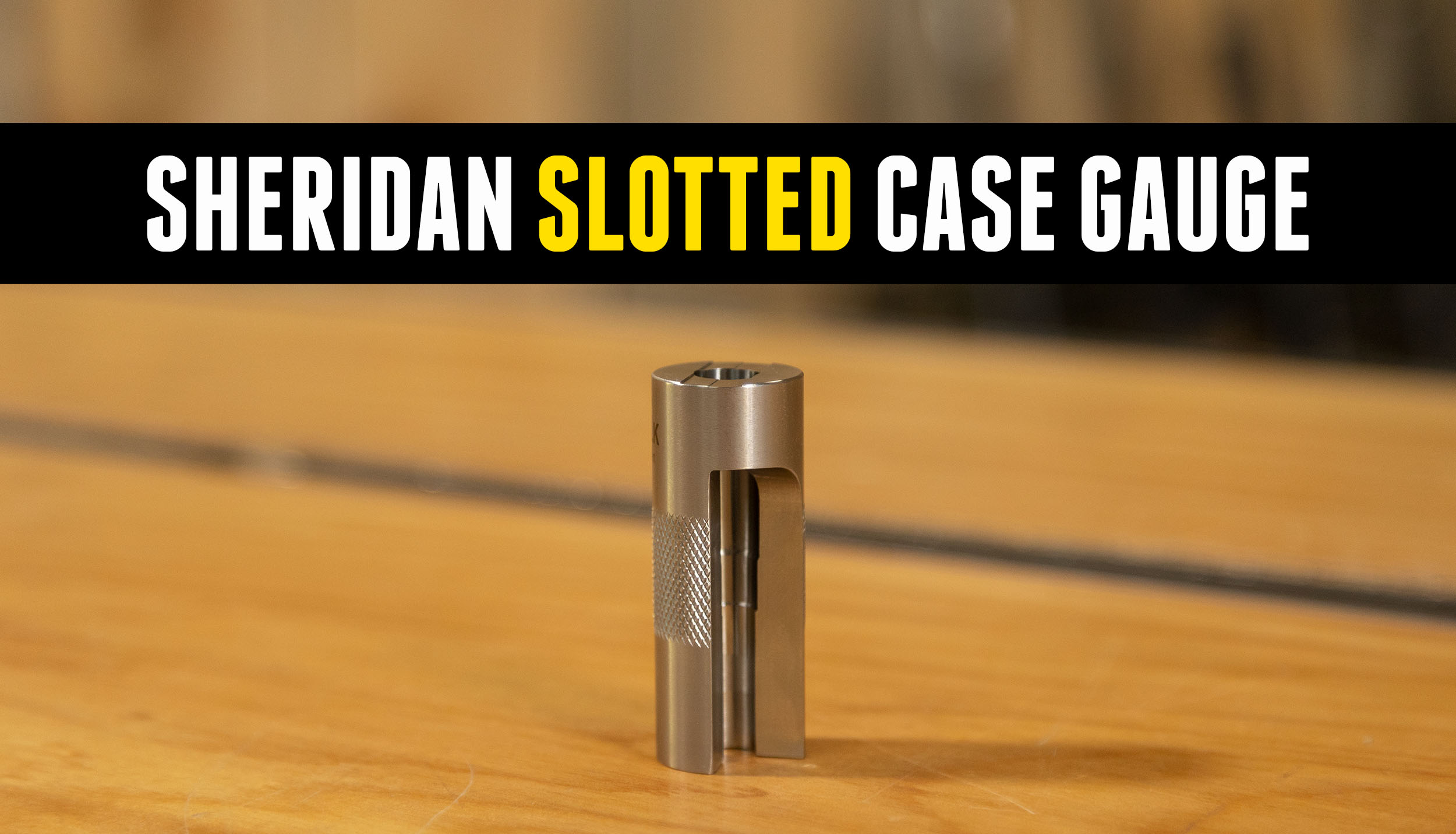Using the correct case gauge can save a lot of time and prevent considerable headaches. Sheridan Engineering’s slotted gauge helped me solve a problem I was having with .300 Blackout.
Disclaimer
Ultimate Reloader LLC / Making with Metal Disclaimer: (by reading this article and/or watching video content you accept these terms). The content on this website (including videos, articles, ammunition reloading data, technical articles, gunsmithing and other information) is for demonstration purposes only. Do not attempt any of the processes or procedures shown or described on this website. All gunsmithing procedures should be carried out by a qualified and licensed gunsmith at their own risk. Do not attempt to repair or modify any firearms based on information on this website. Ultimate Reloader, LLC and Making With Metal can not be held liable for property or personal damage due to viewers/readers of this website performing activities, procedures, techniques, or practices described in whole or part on this website. By accepting these terms, you agree that you alone are solely responsible for your own safety and property as it pertains to activities, procedures, techniques, or practices described in whole or part on this website.
The Issue
Recently we showed how to mass convert .223 brass to .300 Blackout cases using Dillon’s DA3000 and CP2000 autodrive, but encountered an issue.
This goes back to my .223 vs. 5.56 Fact vs. Fiction video.
There is considerable case thickness variation with .223 and 5.56. Some say 5.56 has thicker cases. I took a sample of .223 and 5.56 cases, measured the wall thickness of the case body, and didn’t find this to be true.
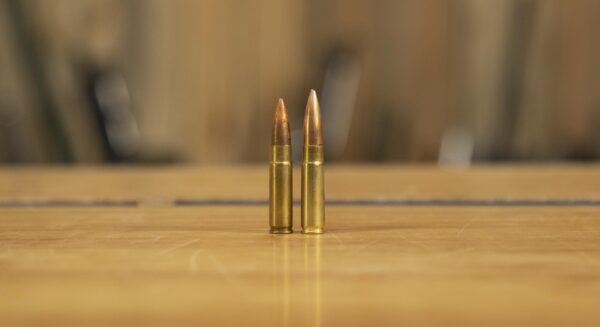
When converting to .300 Blackout, the body area of the .223/5.56 brass becomes the neck area of the .300 Blackout brass. This means that wall thickness variation becomes neck thickness variation. We encountered a number of issues while trying to shoot full-auto .300 Blackout with the converted brass.
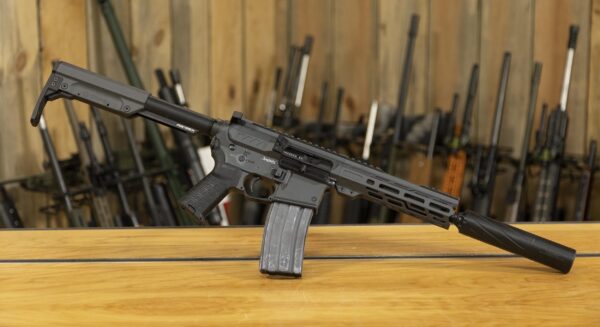
It would pass the chamber gauge check, but would not chamber in the machine gun.
About the Sheridan .300 Blackout Ammunition Gauge
Sheridan Engineering’s slotted gauge has an open window and three steps on the top.
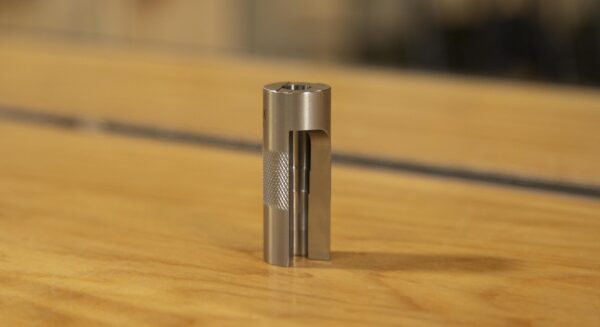
The top step is maximum chamber, the middle step is minimum chamber, and the bottom step is minimum brass. This provides more information on important datum points.
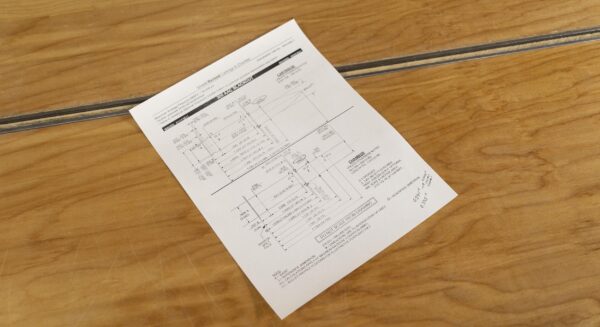
This gauge is cut to SAAMI specs, so if the ammunition passes and your chamber is set to SAAMI specifications or more relaxed, it will chamber.
From Sheridan Engineering:
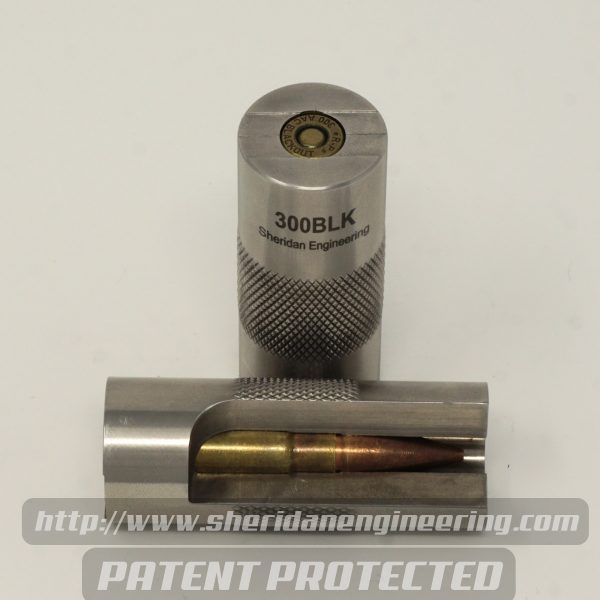
Choose between SLOTTED or NON-SLOTTED.
AMMUNITION GAUGES are uniquely designed to check loaded ammunition, giving you the ability to check your factory ammunition or reloads against a spec chamber. The gauge is machined to the SAAMI minimum chamber spec for the 300BLK caliber. This allows you to check brass sizing, headspace, bullet seating, and crimping all with one gauge. Stainless Steel construction. These gauges are designed primarily for use where the brass is always full length resized. Please see our FAQ for details.
SLOTTED GAUGES are an improvement of existing ammunition gauge design. By taking an ammunition gauge and opening up a window into it, you can now actually see the shoulder, and how everything seats into the chamber. You can verify the fit visually. And see the interface between your ammo and a chamber that you would never otherwise see. This unique tool is now patented.
These gauges can help you both troubleshoot and improve your reloads and purchased ammunition. They can be used to catch several common issues with reloading 300BLK, including issues with thick necks. Use as a chamber checker to ensure that all of your rounds will work in any of your firearms. Use as a go/no go gauge to check the ammo headspace measurements against SAAMI min/max.
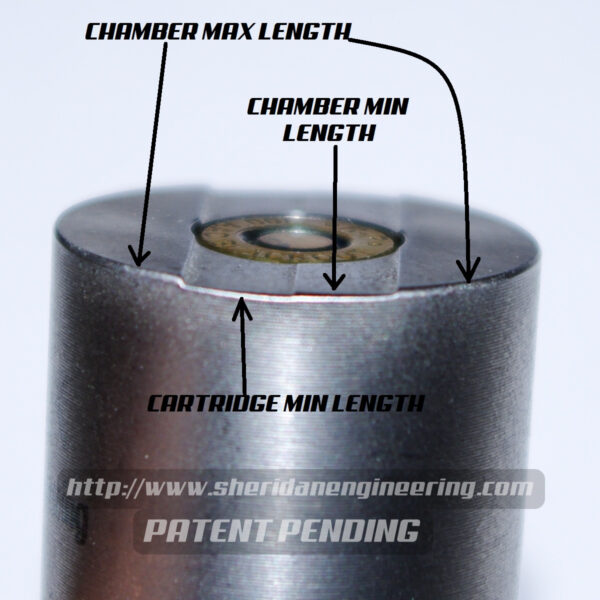
These gauges have steps on the face to correspond to the cartridge spec minimum brass headspace measurement, and the minimum and maximum chamber length. The diameter of the gauge is SAAMI min chamber spec, which is larger than the max spec of the cartridge. The length of the gauge corresponds to the max length of the cartridge.
Any rounds that fit the gauge will chamber. Unlike other gauges, ours includes the throat and bore, so that when you check the loaded ammunition, you are checking the complete round, not just the case.
These gauges allow you to:
-
- Speed up your checking process
- Check many critical dimensions at once
- Check your brass prior to loading it
- Perform a chamber check on your ammo, without having to chamber it in a firearm
- Perform a headspace check on your ammo
- Perform a cartridge length check on your ammo
- Catch issues with concentricity
See what sort of reviews our 300BLK gauges get on the web:
The Solution
The same brass that passed through my Wilson case gauge but didn’t chamber in my rifle did not pass the Sheridan gauge. The open window of the slotted gauge made it easy to see the issue was in the neck area.
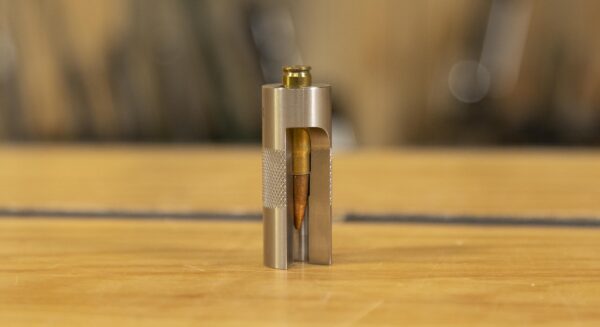
I verified with pin gauges and the Wilson case gauge neck area was about 0.008” beyond SAAMI spec.
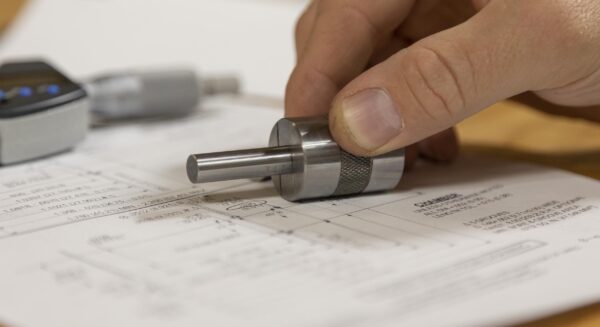
In this scenario, one would need to use the Wilson minimum chamber gauge. This gets a bit confusing.
Conclusion
I really like the design and simplicity of the Sheridan gauge and will be using them for upcoming projects.
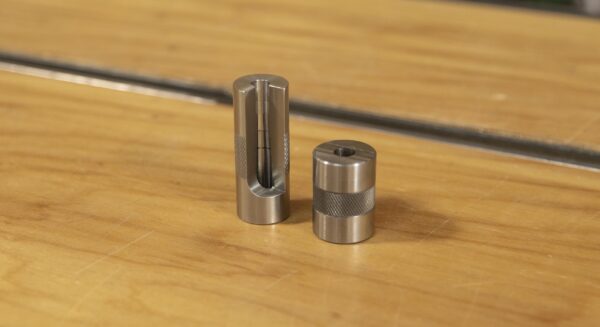
Remember to always check what your case gauge actually checks. Both the Sheridan slotted gauge and Armanov ammo checkers caught my .300 Blackout problem!
Get the Gear
Order the .300 Blackout Slotted or Non-Slotted Ammunition Gauge directly from Sheridan Engineering.
Don’t miss out on Ultimate Reloader updates, make sure you’re subscribed!
Thanks,
Gavin Gear
